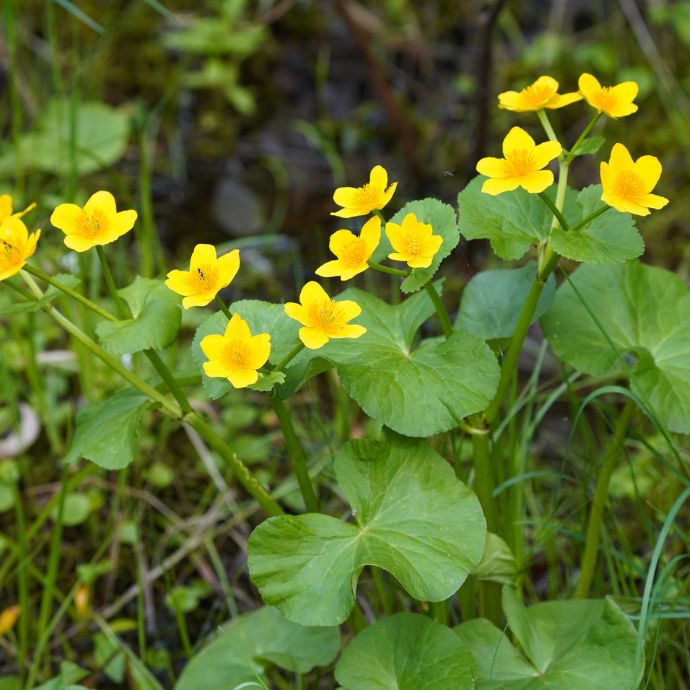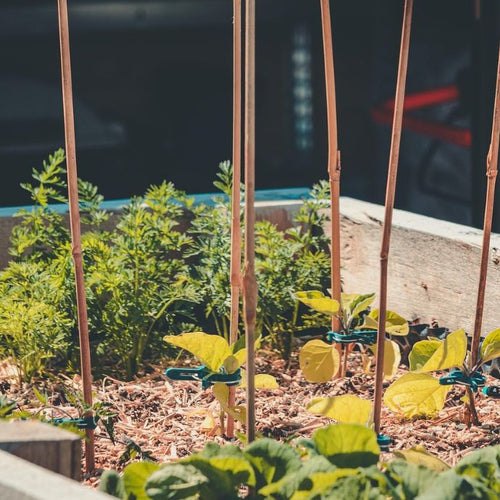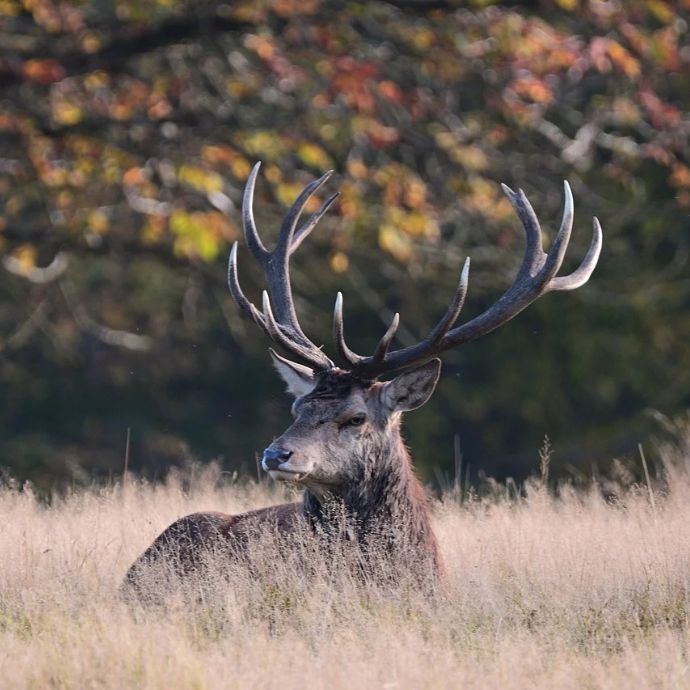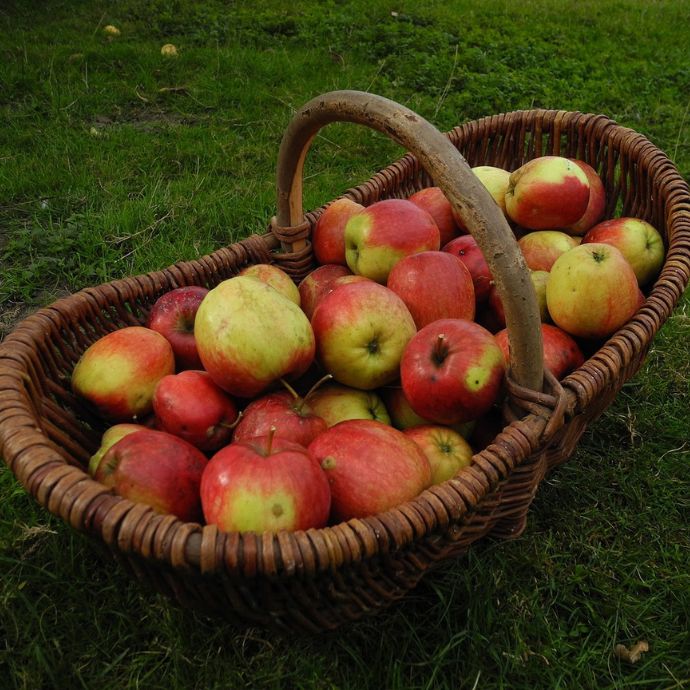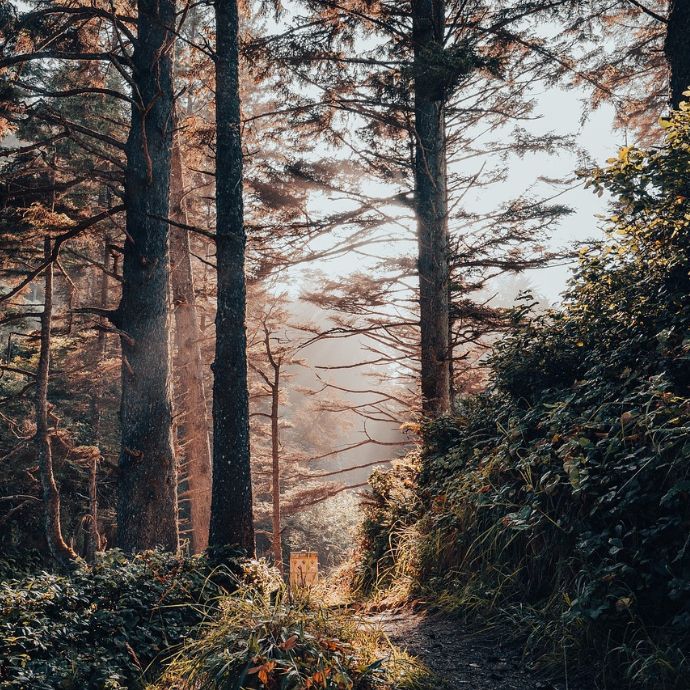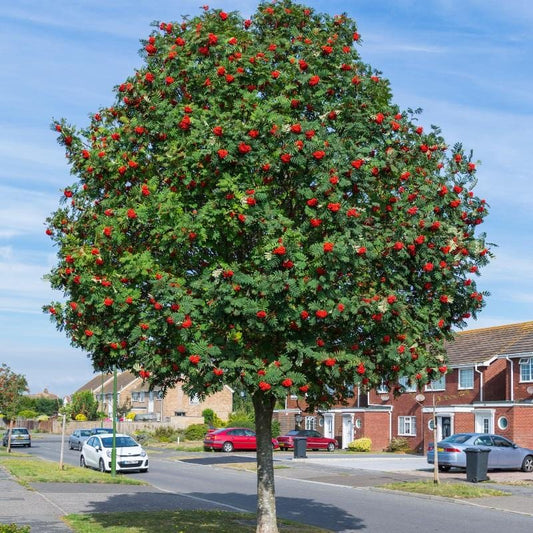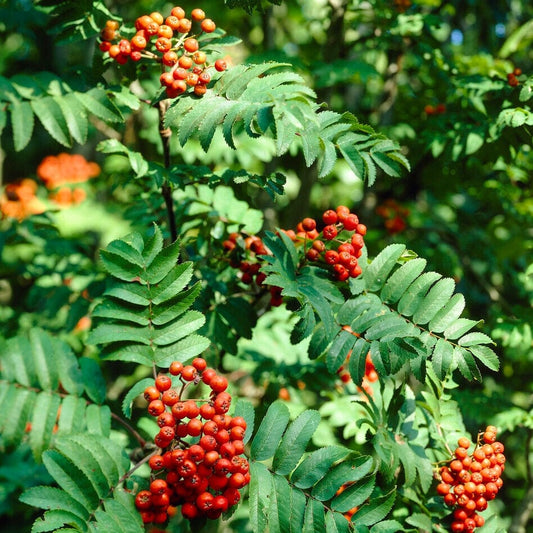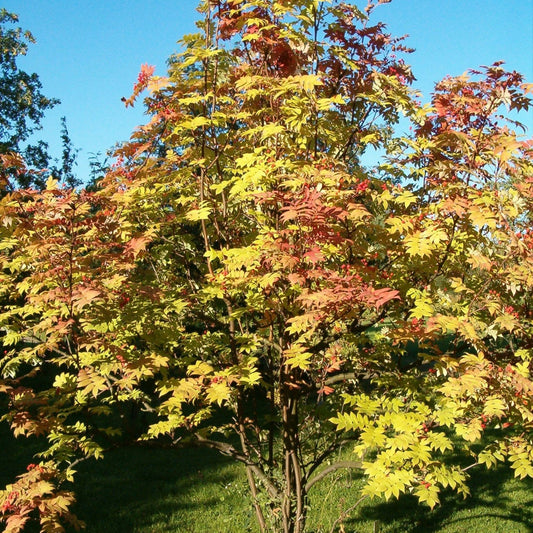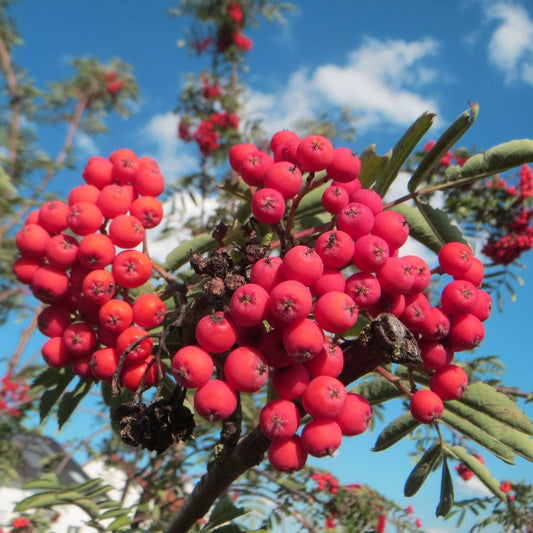Rowan Tree Leaves: Identifying a Mountain Ash Tree

Rowan (or Mountain Ash) trees are among our very favourite here at Roots, and really, can you blame us? With their vivid (usually) red berries, attractive spreading habit and lovely-jubbly leaves, these trees are near-universally loved by people and birds alike.
But how do you identify one when it’s not wreathed in those berries so synonymous with the species? That’s exactly what we’ll be walking you through today in our guide to identifying rowan tree leaves, so strap in and let’s get investigating…
Jump to:
- What do rowan trees look like?
- Ways to identify a rowan
- Best rowan leaves
- Problems with rowan leaves
What do rowan tree leaves look like?
Fortunately, rowan leaves are quite distinctive and therefore easy to identify. The deciduous leaves are arranged alternately, with each pinnate leaf comprising oppositely-arranged leaflets (typically six to eight) and a final ‘terminal’ leaflet pointing out at the end.
Colour wise, rowan leaves are normally a mid-green colour in spring and summer, taking on more fiery hues come autumn. The leaflets are gently toothed and ovate in shape. In terms of size, each leaf is around twenty centimetres (or so) in length, though exact sizings will vary from variety to variety.
Fun fact: the reason that rowans are often called ‘mountain ash’ trees is, in fact, down to the similarity between rowan and ash leaves. See, wasn’t that fun?

How else can you identify rowan/mountain ash trees?
Of course, the leaves aren’t the only way to identify a rowan tree, with the two most obvious other identifiable features being the tree’s berries and flowers:
Berries
The berries of the rowan tree are one of its most distinctive aspects. Red, orange or even yellow, they tend to measure around 1cm across and come in dense clusters. As alluded to, these small, spherical fruits are popular with our avian friends, particularly thrushes, blackbirds and starlings. The berries are most often found on the trees from the latter part of summer into autumn.

Flowers
In spring, rowan trees become clothed in wonderful white flower corymbs, with each bloom consisting of five delicate petals. Each flower bunch can measure up to 15 cm in diameter. The flowers are highly attractive to bees and other pollinators looking for sources of nectar and pollen. In fact, the rowan tree is recognised by the Royal Horticultural Society as one of its Plants for Pollinators.

Which varieties have the nicest leaves?
There are a few rowan varieties we’re particularly fond of when it comes to their foliage, including ‘Joseph Rock’, ‘Pink Pagoda’ and ‘Sheerwater Seedling’.
‘Joseph Rock’
The intense yellow berries of this rowan variety contrast beautifully with its deep green leaves, which take on striking crimson hues in the autumn. The tree is named after the renowned Austrian-American botanist of the same name, who is thought to have discovered the seeds that went on to become Sorbus rockii in 1932, in southwestern China.
‘Pink Pagoda’
In a not-so-surprising twist given this variety’s name, this tree features stunning pinkish-red berries as well as alluring dark green foliage. As with the previous and upcoming varieties, when autumn rolls around, the tree’s leaves adopt a kaleidoscope of burning colour, adding further to this tree’s already immense visual appeal.
‘Sheerwater Seedling’
This relatively compact variety is perfect for featuring as a specimen tree in smaller gardens, thanks to its comparatively contained ultimate height and upright habit. Its leaves turn an intense red colour in autumn, particularly if the preceding summer hasn’t been that warm – which, let’s face it, isn’t exactly unheard of here in the UK…

Problems associated with rowan leaves
Whilst rowan trees are normally fairly hassle-free trees, like any plant they can still be affected with problems from time to time. Below, we’ve listed some of the most common issues affecting rowan tree leaves, as well as walking you through what you can do about them.
European Mountain Ash Ringspot Associated Virus (EMARAV)
EMARAV is a virus that leads to pale green splotches appearing on leaves, typically in ring-shaped patterns. Sadly, this virus can lead to the tree dying and, at the time of writing, the only thing you can really do is report it to TreeAlert.
Silver leaf fungus
This fungal issue presents itself as a silvery, metallic sheen on the surface of your rowan tree’s leaves. Left unchecked, this fungus can kill your tree, but if you spot and treat it quickly enough, you might be able to save it.
Prevention is better than cure in this instance, and it all comes down to pruning hygiene. Using clean, sterilised pruning tools is vital, as is pruning when the tree is dormant and the weather is dry. You’ll need to cut away infected areas to prevent the fungus from spreading further.
Brown leaves
If your rowan tree’s leaves are turning brown, then the most likely reason is a lack of water. The easy fix? Water your tree more. Come on, what else were you expecting the answer to be? In hot, dry summers you may need to water your tree every day to help keep the shallow root system of the tree nice and hydrated.
For a more comprehensive guide on issues experienced by rowan trees, check out our in-depth guide.
Last updated: 26/08/2024

